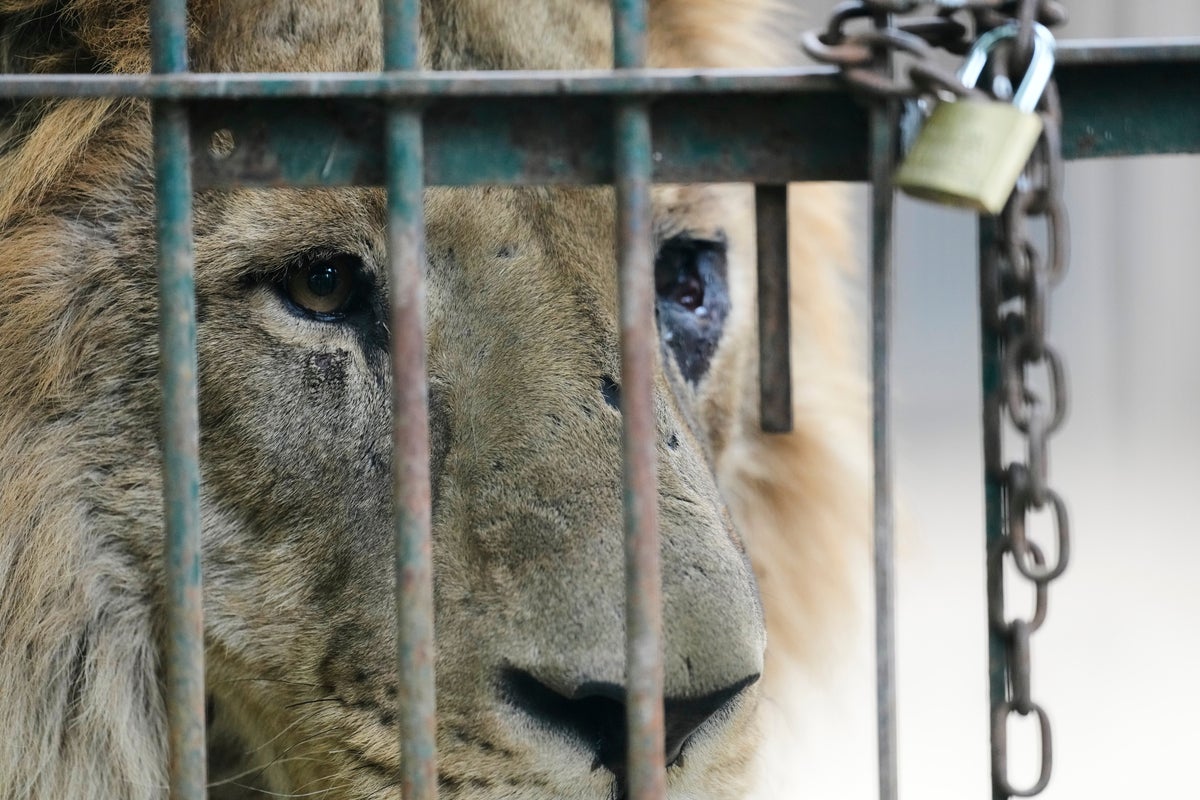
Dozens of lions, tigers, and bears, survivors of a now-shuttered zoo on the outskirts of Buenos Aires, Argentina, are finally receiving urgent veterinary care after years of neglect.
The 62 big cats and two brown bears, found pacing weakly in claustrophobic cages, are undergoing evaluation and treatment before their eventual transfer to vast wildlife sanctuaries abroad.
This monumental rescue operation, one of the largest and most challenging of its kind, follows a recent agreement between Argentine authorities and an international animal welfare organisation.
The Lujan Zoo, infamous for allowing visitors to handle and pose with big cats, was closed in 2020 due to mounting safety concerns.
However, the plight of the captive animals there only worsened.
For five years, the remaining creatures were sustained by a few loyal zookeepers who, despite losing their jobs, continued to feed and care for the stranded lions and tigers. Most, tragically, did not survive.
When Four Paws, the international animal welfare group, first visited in 2023, caretakers counted 112 lions and tigers – a stark reduction from the more than 200 big cats believed to have been housed at the zoo when it closed.
Two years on, almost half of the animals have succumbed to illnesses from poor nutrition, wounds from fights with animals they’d never encounter in the wild, infections from lack of medical attention and organ failure from the stress of living in such cramped conditions.
“It was really shocking,” said the organisation’s chief program officer, Luciana D’Abramo, pointing to a 3-meter by 3-meter cage crammed with seven female lions. “Overcrowded is an understatement.”
Next-door, two Asian tigers shared a tiny cage with two African lions — a “social composition that would never be found in nature,” D’Abramo said. “There’s a lot of hostility, fighting.”
A single lion typically gets 10,000 square meters to itself at Four Paws’ sanctuaries around the world.
After striking an agreement with Argentina’s government earlier this year, Four Paws took over responsibility for the surviving wild animals in Lujan last month.
The memorandum of understanding involved Argentina committing to end the sale and private ownership of exotic felines in the large South American country, where enforcement efforts often run aground across 23 provinces that have their own rules and regulations.
Although the Vienna-based organisation has previously evacuated starving tigers from Syria’s civil war, abandoned bears and hyenas from the war-ravaged Iraqi city of Mosul and neglected lion cubs from the besieged Gaza Strip, it has never rescued such a large number of big cats before.
“Here, the number of animals and the conditions where they are kept make this a much bigger challenge,” said Dr. Amir Khalil, the veterinarian leading the group’s emergency mission. “This is one of our biggest missions … not only in Argentina or Latin America, but worldwide.”
On Thursday, veterinarians and experts from the organisation were scrambling around the derelict zoo to assess the animals one by one. Most had not been vaccinated, sterilized or microchipped for identification.
The team whisked sedated lions and tigers onto operating tables, dispensing nutrients, antibiotics and doses of pain medication via IV drips.
The quick checkups frequently transformed into emergency surgeries. One tiger was treated for a bleeding gash in its tail last week, another for a vaginal tumor on Thursday. Several tigers and lions needed root canals to repair infected molars that had been broken on the steel cage bars.
Others received treatment for claws that had grown inward from walking too much on unnatural, plank flooring in the spartan enclosures.
After evaluating each animal in the coming weeks, Four Paws will arrange for their transfer to more expansive, natural homes around the world.
Some Argentine zookeepers who spent decades feeding and caring for the big cats say they’re happy to see Four Paws improving the conditions. But there was also a sense of nostalgia for how things were.
“It used to be a very popular place … I’ve seen people cry because they could touch a lion or feed a tiger with a bottle,” said Alberto Díaz, who spent 27 years working with the wild cats at the Lujan Zoo, overseeing hands-on experiences that catered to countless tourists.
“Time changes, laws change, and you have to adapt or get left behind.”
